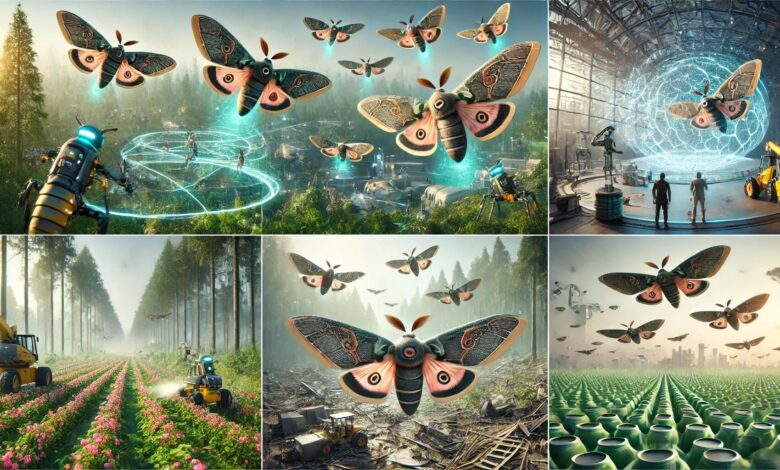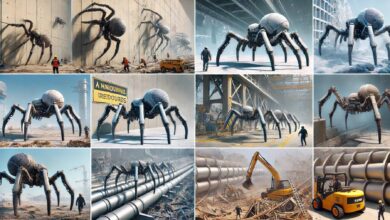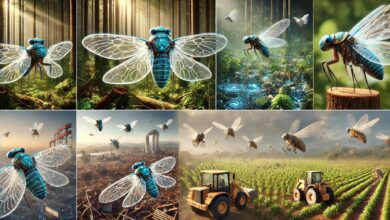
In the realm of space exploration and robotics, innovation often stems from the natural world. At Tengri Space, we continuously seek inspiration from nature to enhance our technological advancements. One such marvel that has significantly influenced our swarm robotics research is the moth, specifically its wings. Moth wings, with their unique structure and functionality, offer invaluable insights into creating efficient and resilient robotic systems. In this comprehensive article, we delve into the intricate details of moth wings, their biological significance, and how they inspire our cutting-edge robotics. Additionally, we will address some common questions about moth wings to provide a holistic understanding of these fascinating creatures.
The Anatomy of Moth Wings
Moths, belonging to the order Lepidoptera, have a pair of forewings and hindwings. These wings are covered in tiny scales, which are actually modified hairs, giving them their characteristic patterns and colors. The scales overlap like shingles on a roof, providing both structural integrity and aerodynamic efficiency. This unique design not only aids in flight but also plays a crucial role in thermoregulation, camouflage, and communication.
Structure and Composition
Moth wings are primarily composed of chitin, a long-chain polymer that is also found in the exoskeletons of other arthropods. Chitin provides the necessary strength and flexibility, allowing the wings to withstand the rigors of flight. The wings are supported by a network of veins, which not only provide structural support but also house nerves and blood vessels. This intricate venation pattern is crucial for the wing’s functionality, ensuring efficient distribution of forces during flight and facilitating rapid movements.
Moth Wings and Swarm Robotics
At Tengri Space, our swarm robotics research has greatly benefited from studying the mechanics of moth wings. Swarm robotics involves the coordination of multiple robots to perform tasks that would be challenging for a single robot. Moths, with their agile and coordinated flight, serve as an excellent model for developing such systems.
Biomimicry in Robotic Design
By mimicking the structure and functionality of moth wings, we have developed robotic wings that exhibit similar properties of flexibility, strength, and efficiency. These robotic wings are designed to operate in atmospheric conditions, leveraging the aerodynamic principles observed in moths. The overlapping scale-like structures provide enhanced durability and reduce the risk of mechanical failure, ensuring prolonged operation in harsh environments.
Coordinated Movements
Moths exhibit remarkable coordination during flight, often moving in swarms to navigate and forage. This behavior is a direct inspiration for our swarm robotics systems, where multiple robots must work together seamlessly. By studying the neural and muscular control mechanisms in moths, we have developed algorithms that enable our robots to communicate and coordinate their movements effectively, much like a swarm of moths.
Applications of Moth-Inspired Robotics
The application of moth-inspired robotics extends beyond space mining. These systems hold potential in various fields, including environmental monitoring, disaster response, and agricultural surveillance. Each of these areas benefits uniquely from the principles derived from the study of moth wings and their functionality.
Environmental Monitoring
In the field of environmental monitoring, moth-inspired robots can be deployed to gather real-time data on various atmospheric conditions. Their ability to fly and navigate through complex environments allows them to access hard-to-reach areas, such as dense forests, mountainous regions, and urban canyons. These robots can be equipped with sensors to measure air quality, detect pollutants, and monitor weather patterns. Their lightweight and flexible design, inspired by moth wings, enables them to hover and maneuver with precision, providing detailed and accurate data collection. This data is crucial for understanding environmental changes, managing natural resources, and implementing conservation strategies.
Disaster Response
Moth-inspired robotics also hold significant potential in disaster response scenarios. In the aftermath of natural disasters like earthquakes, hurricanes, and floods, quick and efficient search and rescue operations are vital. The agility and coordination observed in moth flight can be replicated in swarm robotics to navigate through debris, enter collapsed structures, and locate survivors. These robots can communicate with each other to cover large areas systematically, ensuring that no region is overlooked. Additionally, their ability to operate in harsh conditions, such as smoke-filled or low-visibility environments, makes them indispensable tools for emergency responders. The deployment of such robots can greatly enhance the speed and effectiveness of rescue missions, potentially saving many lives.
Agricultural Surveillance
In agriculture, moth-inspired robots can revolutionize how crops are monitored and managed. Traditional methods of agricultural surveillance can be labor-intensive and time-consuming. However, with the introduction of these advanced robotic systems, farmers can gain real-time insights into the health and growth of their crops. The robots can fly over fields to detect signs of disease, pest infestations, or nutrient deficiencies, allowing for timely interventions. Their precise and non-invasive navigation ensures that crops are not damaged during the monitoring process. Furthermore, these robots can assist in pollination by mimicking the flight patterns and behaviors of pollinating insects, thereby enhancing crop yields and ensuring food security.
Overall, the incorporation of moth-inspired design into robotics opens up numerous possibilities for improving efficiency, accuracy, and responsiveness in various applications. By leveraging the principles of biomimicry, Tengri Space is at the forefront of developing innovative solutions that address some of the most pressing challenges across multiple industries.
Why Do Moths Vibrate Their Wings?
Moths vibrate their wings for several reasons, primarily to warm up their flight muscles before taking off. Unlike birds, moths do not have a high basal metabolic rate, so they rely on muscular activity to generate the necessary heat for flight. This pre-flight warm-up, known as shivering thermogenesis, is crucial for maintaining optimal muscle function, especially in cooler temperatures.
How Many Wings Do Moths Have?
Moths have four wings: two forewings and two hindwings. The forewings are typically larger and more rigid, providing the main lift and thrust during flight. The hindwings are smaller and play a supportive role, aiding in stability and maneuverability. This four-winged configuration allows for precise control and agility, enabling moths to navigate complex environments with ease.
What Are Moth Wings Made Of?
Moth wings are composed of chitin, a fibrous substance that provides both strength and flexibility. Chitin is the same material found in the exoskeletons of other arthropods, including insects and crustaceans. The wings are also covered in tiny scales, which are modified hairs. These scales serve multiple purposes, including thermoregulation, camouflage, and signaling. The combination of chitin and scales results in a lightweight yet durable wing structure, perfectly adapted for flight.
How to Help a Moth with a Broken Wing
If you find a moth with a broken wing, there are a few steps you can take to help. First, gently pick up the moth and place it in a safe, enclosed space, such as a small box with air holes. Provide some sugar water or fruit juice on a cotton ball to give the moth a source of nourishment. Unfortunately, a broken wing cannot be repaired, but by providing a safe and comfortable environment, you can help the moth live out its remaining days with some level of comfort.
The study of moth wings offers invaluable insights into both biology and engineering. At Tengri Space, we have harnessed these insights to develop advanced swarm robotics systems, drawing inspiration from the intricate design and functionality of moth wings. As we continue to explore the natural world, we remain committed to leveraging biomimicry to push the boundaries of technology and innovation. Through understanding and emulating the wonders of nature, we can create robotic systems that are not only efficient and resilient but also capable of addressing some of the most pressing challenges of our time.



